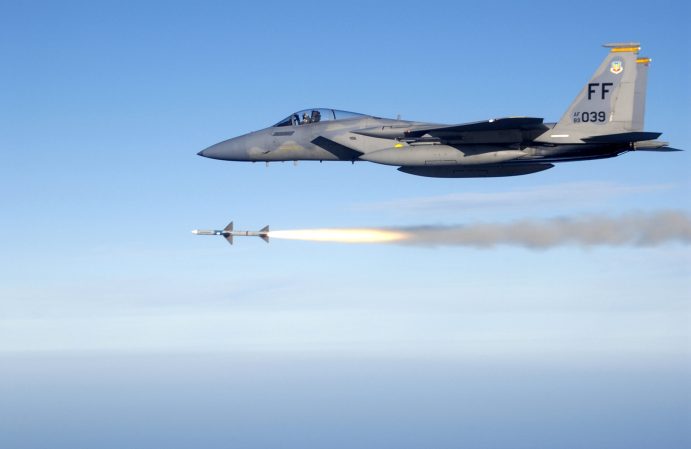In the 1960s, Japan was importing a number of high-speed fighters to replace Korean War-vintage F-86s. After all, Godzilla needs to practice using the halitosis from hell. Or maybe he wanted a more challenging target.
Actually, in all seriousness, the Korean War-era planes were old. Japan was replacing them with F-104 Starfighters and F-4 Phantoms. But they needed a trainer. Ultimately, they decided to build one. That became the Mitsubishi T-2. The plane proved to be an excellent trainer, but the Japanese discovered it could be armed. Once Japan got 28 T-2A unarmed trainers and 62 T-2Bs that were equipped to carry some weapons, notably AIM-9 Sidewinders and a M61 20mm Gatling gun, the line was available, and Mitsubishi went to work.

The F-1 took the T-2’s limited weapons capability to a new level. According to MilitaryFactory.com, the F-1 became Japan’s first indigenous supersonic fighter. Mitsubishi was a logical choice – not only had they license-built F-4s and F-104s, but its best-known fighter was the A6M Zero. The F-1’s primary weapon is the ASM-1 anti-ship missile.
This missile, also known as the Type 80, carried a warhead that was roughly 330 pounds of high explosive. The initial version with a rocket engine had a range of roughly 31 miles. Swapping out the rocket for a turbojet gave the missile a range of almost 112 miles.

The F-1 had a top speed of 1,056 miles per hour, could carry two ASM-1s, two drop tanks, and two AIM-9 Sidewinders, plus it carried a 20mm M61 Gatling gun. Japan built 77 of these planes, which served from 1978 to 2006. The replacement was the Mitsubishi F-2, Japan’s F-16 on steroids, which also has taken over the supersonic trainer role.
You can see a video about this fighter below.


















